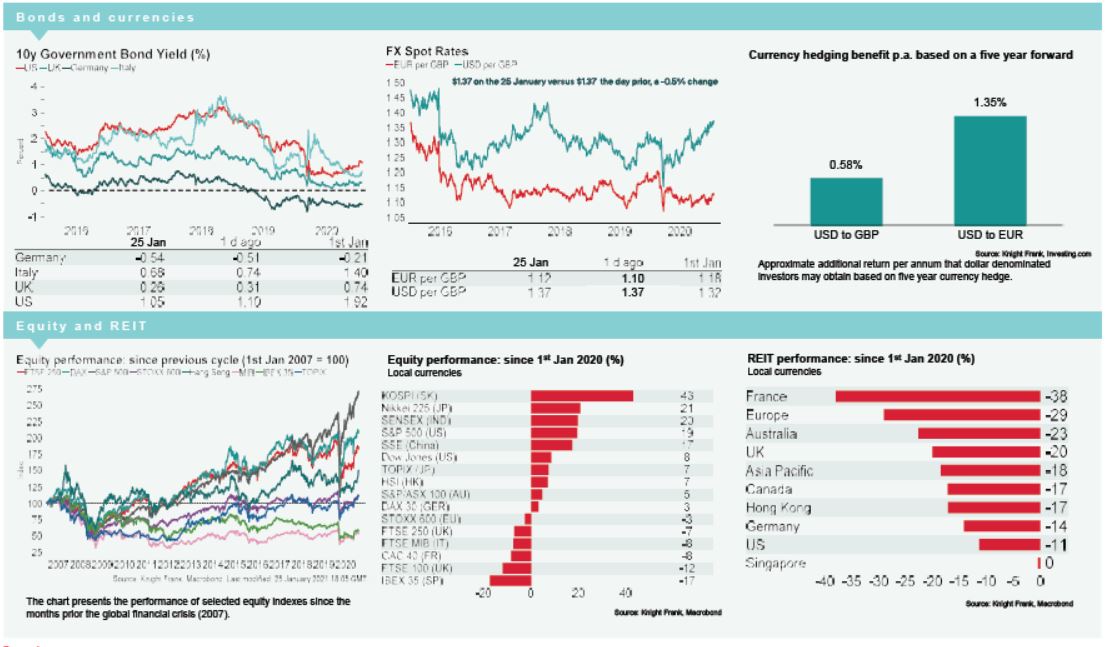Daily Economics Dashboard - 26 January 2021
An overview of key economic and financial metrics.
2 minutes to read

Download an overview of key economic and financial metrics on 26 January 2021 2020.
Equities: In Europe, stocks are higher this morning. The DAX (+1.4%) is the best performing index, followed by the CAC 40 (+0.9%), the STOXX 600 (+0.7%) and the FTSE 250 (+0.3%). In Asia, equities declined. The Hang Seng, the CSI 300 and the KOSPI all closed around -2% lower, while the TOPIX lost -0.8%. In the US, futures for the S&P 500 and Dow Jones Industrial Average (DJIA) remain flat.
VIX: the CBOE market volatility has increased +2.1% this morning to 23.68, above its long term average (LTA) of 19.9. The Euro Stoxx 50 vix is down by -8.7% to 23.6, broadly at its LTA of 23.9.
Bonds: The UK 10-year gilt yield softened +2bps to 0.28%. The German 10-year bund yield and the US 10-year treasury yield softened by +1bp to -0.54% and 1.05% respectively.
Currency: Sterling is currently $1.37 while the Euro has depreciated to $1.21. Hedging benefits for US dollar denominated investors into the UK and the eurozone are at 0.58% and 1.35% per annum on a five-year basis.
Baltic Dry: The Baltic Dry decreased -2.5% yesterday to 1,765, a level which is -4.9% lower than the four-month high seen last week.
Oil: Brent Crude and the West Texas Intermediate (WTI) are stable at $55.6 and $52.7 per barrel, respectively.
UK Unemployment: The UK unemployment rate was estimated at 5.0% in the three months to November 2020 an increase from 4.9% in the previous period but below expectations of 5.1%. It is the fifth consecutive month of rising unemployment, to the highest level seen since August 2016. The number of unemployment benefit claims increased by 7k to 2.6m in December 2020. This represents a +0.3% increase over the previous month and +113% since March 2020.
World Trade: According to the CPD Netherlands Bureau, world trade increased by 2.1% in November 2020, returning to positive year on year growth and lifting to pre-pandemic levels. However, there are regional differences, with Asia seeing the largest growth in real exports, while US and Europe remain below pre-pandemic levels.